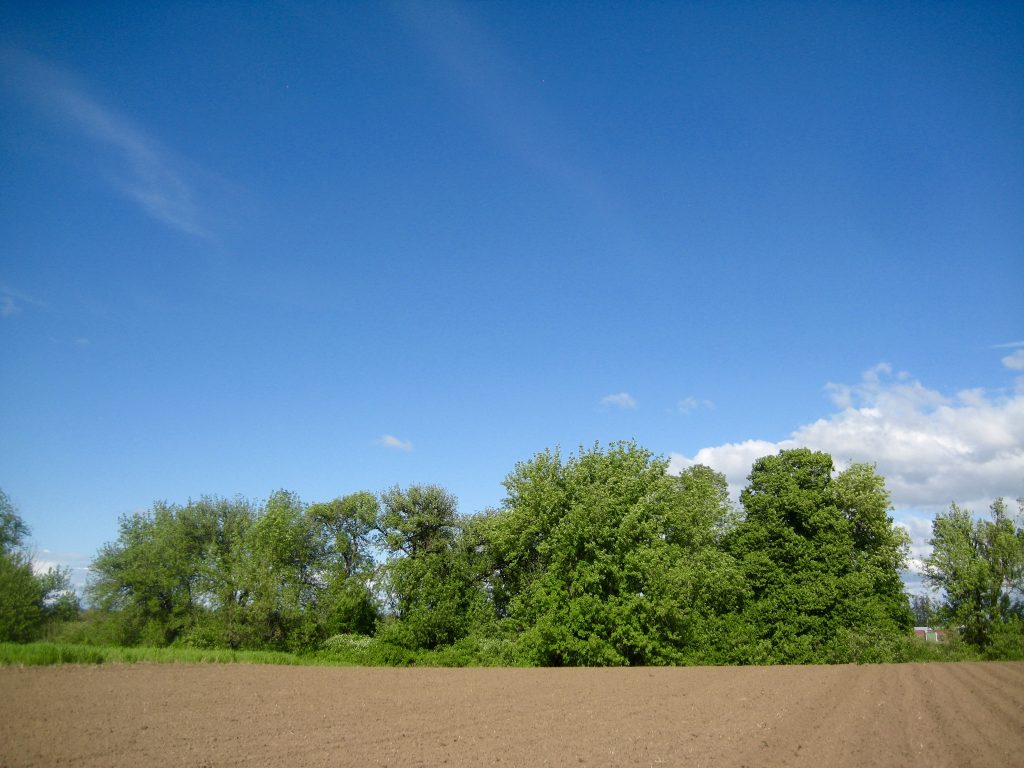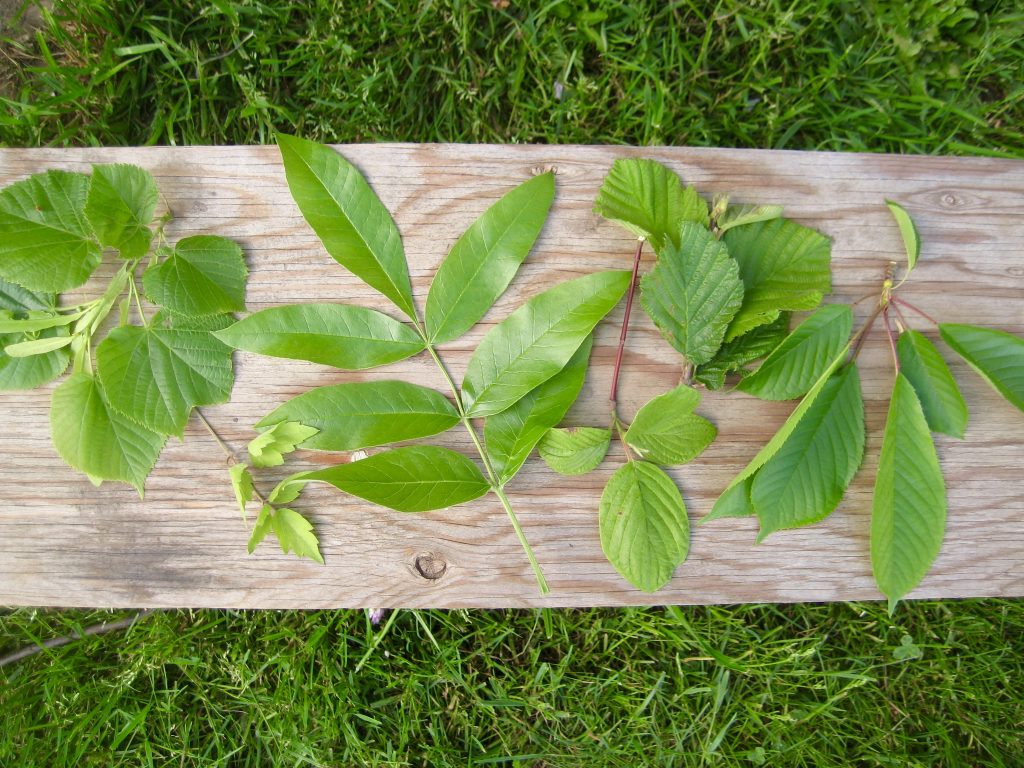I recently listened to the tail end of a fascinating Radiolab episode about how ancient cultures don’t seem to have a word for the color blue. The classic example is in Homer, when the narrator refers to the “wine-dark sea.”
I had heard of this phenomenon before and enjoyed hearing the radio show use its unique investigative techniques to tease apart the significance of no mentions of blue. Spoiler alert: the end conclusion is that human eyes have been able to see blue practically forever, but that words denoting blue don’t seem to show up in languages until the corresponding cultures find the technologies to create blue dyes and pigments. True blue is actually rather rare in nature and one of the hardest colors to create (unlike red, which can be made from simple clays and is the first named color in all languages after black and white).
Researchers have visited an African tribe that still doesn’t have a word for blue and shown them color swatches that are all various shades of green and then one blue and asked them to point out the different one. The participants didn’t seem to even see the difference even while they stood out starkly to the experiment designers.
Everyone on the radio show marveled at this phenomenon — how could someone not see blue just because they don’t have a word for it? Isn’t it so obvious that the sky is blue? (Another spoiler: actually not really when this hasn’t been pointed out as “true” fact — many days the sky is actually gray or white.)
I suppose it does seem funny at first that someone wouldn’t be able to see blue, especially in a culture where teaching children the colors of the rainbow is part of introductory language skills. Look at board books for toddlers, and you’ll inevitably see pages sorted by color because apparently we think this is a very important early skill to have!
But I had to laugh at the naivete of the radio voices. Because, of course, this is how perception works. When we learn to identify something (often by giving it a name and thereby categorizing it), it suddenly stands out to us.
Because our culture is very invested in the idea of blue, not being able to immediately distinguish “blue” from a similar tone of “green” seems ridiculous and almost unbelievable. But, my friends, you should sit down with a painter sometime and learn about all the “obvious” color differences that you have yet to notice because you don’t know their names and haven’t spent hours carefully mixing them.
Furthermore, if I were to play for you various notes for you on the piano, would you be able to pick out an E? I know people who can, but I can’t at this point. If you are singing, can you tell if you go flat? To an experienced musician, that sounds will be painfully obvious, but many people cannot distinguish that “obvious” sound.
Likewise, have you ever been at a dinner with any of our wonderful local wine industry professionals and listened to them remark on tones in the wine that you just don’t notice? I have.
It’s not always sufficient to point to something once and say “this is the color blue” (apparently not, because we stuff our children with color information repeatedly throughout childhood), but through repeated exposure and examples, “blueness” becomes obvious. This is why I (as a novice wine drinker) can’t always distinguish the same flavors in wine that people much more experienced can. It’s not necessarily because my taste buds are less sensitive, but because my mind has fewer examples of those tones to draw upon for comparison.
On the farm, we have observed in ourselves and people working with us that the longer a person works with a particular crop, the easier it is to see the markers for appropriate maturity. A classic example (and appropriate right now!) is learning to see the perfectly ripe snap pea. The first few times a person picks, they will have to consciously consider each pea for size and shape and consider to input of a more experienced picker (too small; too fat; etc.). But after years of picking, perfectly mature peas are so obvious that picking can be done much quicker and almost unconsciously while carrying on a conversation or listening to the radio. Casey and I had this experience with almost every crop we’ve grown, that our years of learning to see it translates into a kind of expertise that allows us to make very quick and accurate decisions when harvesting (or planting or weeding or doing ground prep, etc.).
One of my favorite parts of the second Genesis creation story is when God brings all the animals and creatures of the earth to name them (Gen 2:19-20). Many people read this story as a narrative of domination, but I always read it as a story about learning to know about the world. When we give names (or learn names from others) for things, we see them in an entirely different way.
For me, this is one of the true joys of living and learning. I absolutely love the experience of increasing my knowledge of the world and thereby fundamentally shifting the way I experience everything. Spending our days on the farm and learning about the world around us has brought so much more definition and richness and depth into my perception, and I know that this process will only continue as I continue to make time to observe and learn.
What is a forest if you walk through it unaware of the diversity of creatures living there? How does that experience fundamentally change if you slow down and take the time to learn to identify the differences between the plants and trees (usually by learning the names others have given them)? I have spent years now hiking the same trails near our farm, and I still see new plants each year and learn new bird calls. The more I learn, the more I am able to see what I don’t yet know. This spring, I noticed and identified blooming Western Meadowrue for the first time — a beautiful tall plant with distinctive male and female blossoms. I can guarantee you that I will not miss this plant in future springs, but I can’t say I remember seeing it at all in past years. Of course I did, but I did not see it until I took the time to notice, learn, and, yes, name.
It’s like walking through a large crowd and seeing only a blur of faces and then seeing a person you know and recognize. But with each year, I become friends with more and more of what I see in the forest, by the river, and along the hedges of our farm.
I could list countless more examples from different parts of life, all of which are experiences that I genuinely treasure in my heart. This is the joy of life. When we take the time to learn in these ways, our appreciation of whatever we love is enhanced, whether it be fine wines, music, the natural world, poetry, athletic endeavors …
It is a great joy to be sharing my lifelong love of learning with our growing children. I do think that a love of learning is such a natural part of who we are as people that it is an easily contagious kind of passion. Here’s to always learning and seeing new things!
Enjoy this week’s vegetables!
Your farmers, Katie & Casey Kulla
P.S. The leaf samples from our hedge are, from left to right: Linden, wild clematis, Oregon ash, redosier dogwood, hazelnut, and cherry!
P.P.S. On a different note: Oregon ballots are due by 8 p.m. next Tuesday, May 15! Remember to vote! You can find a list of Yamhill County drop sites here.
~ ~ ~
Meet this week’s vegetables:
- Cilantro
- Radishes
- Salad turnips
- Sugar snap peas
- Fennel bulbs
- Head lettuce
- Chard
- Butternut squash
- Marina di Chioggia squash
- Spring onions
- Green garlic




